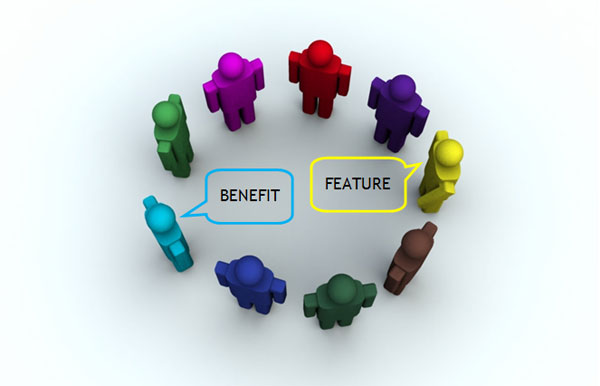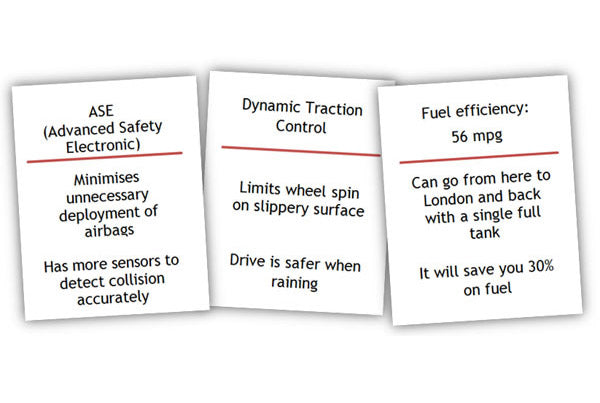Purpose
When making a call, it is important to formulate an objective before making the call. This allows you to focus on what you want and not to get side-tracked. In this exercise, delegates can practice sales skills and learn how to make effective call objectives.
Objective
Analyse a number of call objectives based on a given scenario and decide if it is effective. If not, provide improved suggestions.
What You Need
- A series of “Call Scenarios” provided below. Print the scenarios and cut out each scenario so you have a stack of cards. Depending on the number of your delegates you may need to print several copies of the scenarios so you can give enough of them to each group.
- Answers and guidelines for each scenario are provided at the end.
Setup
- Divide the delegates to groups of 2 or 3.
- Explain that when making a sales call it is important to have a clear and measurable objective. This allows you to guide the conversation towards a sales action and get something out of the call. The action also helps you to centre the conversation on the customer’s needs as opposed to your needs. Poor sales personnel tend to think only of their needs and this is quickly picked up by customers which can put them off. Instead, you should aim to solve the customer’s problem by having a clear objective in your mind before making the call. Summarise using the following:
- Your ideal sales call objective is what you want a buyer to do by the end of the call. It helps you get closer to making a sale or establish a relationship.
- A call objective must have a purpose, be measurable, action-oriented and customer-centred.
- Distribute three scenarios to each group at random. Make sure that you distribute the scenarios evenly so that each scenario is given to multiple groups.
- Ask groups to consider the scenarios and decide if the objective is valid. If not, they should aim to improve the objective within the context of the scenario.
- Allocate 10 minutes for this part.
- Bring everyone back together and ask groups to go through their scenarios one by one, read them and state their analysis and potential improvements. Those groups that had the same scenario should also contribute accordingly.
- Move on to another scenario and continue until all scenarios are covered.
- Follow with a discussion.
Timing
Explaining the Exercise: 2 minutes
Activity: 15 min activity + 10 min sharing results = 25 minutes
Group Feedback: 5 minutes
Discussion
What was the most important lesson learned through this exercise? How important is it to formulate a measurable customer-centred objective? What could happen if you make a sales call without clear objectives?
Call Scenarios
Scenario 1:
You company is planning to host a conference on the technology behind its products and your objective is to let the prospect know about the time and the details of this event.
Scenario 2:
You’ve attended a speed networking event recently and have a contact in mind. Your call objective is to introduce yourself and agree to a time and place for an appointment to meet and discuss a potential collaboration.
Scenario 3:
You are a salesperson for a Health Club chain. You want to call a customer who has recently attended the club as part of a one-month promotional offer. Your objective is to inform the customer about the details of the plan and its cost and get him to commit to a monthly plan.
Scenario 4:
After several email conversations describing your products and getting the customer excited about your products, you want to call the customer and help the sale to progress forward. Your objective is to get a purchase order and get more details so you can send an invoice to the customer for the products in mind.
Scenario 5:
You want to call a lead you acquired from a social media site. Your objective is to inform him of your latest range of products for the current year.
Scenario 6:
You work for a publication and make the vast majority of your earnings through advertisements. Your call objective is to inform a prospect of advertisement opportunities with your publication and show how your publication reaches an important part of the industry that the customer cannot afford to miss.
Answers to Scenarios
Scenario 1:
This is a poor objective. It focuses on the salesperson’s needs as opposed to the customer’s.
Scenario 2:
This is a good objective as it is measurable and is focused on mutual needs.
Scenario 3:
This is a poor objective. It is entirely centred on making sales and benefiting the organisation as opposed to seeing what the customer wants and how he may view committing to a monthly membership.
Scenario 4:
This is a good objective. It is action-based, in the interest of the customer and measurable.
Scenario 5:
This is not a good objective. It is self-centred and doesn’t help in moving the sale to the next level.
Scenario 6:
This is a poor objective. It is focused on making a sale without much emphasis on the needs of a customer, who the customer is and why he should care about your publication or the industry that you reach or represent. It is also not measurable.
Soft Skills Training Materials
Get downloadable training materials
Online Train the Trainer Course:
Core Skills
Learn How to Become the Best Trainer in Your Field
All Tags
Training Resources for You

Course Design Strategy
Available as paperback and ebook

Free Training Resources
Download a free comprehensive training package including training guidelines, soft skills training activities, assessment forms and useful training resources that you can use to enhance your courses.

Our Comprehensive Guide to Body Language

Train the Trainer Resources
Get Insights - Read Guides and Books - Attend Courses
Training Materials
Get downloadable training materials on: Management Training, Personal Development, Interpersonal Development, Human Resources, and Sales & Marketing














Leave a comment
All comments are moderated before being published.
This site is protected by hCaptcha and the hCaptcha Privacy Policy and Terms of Service apply.